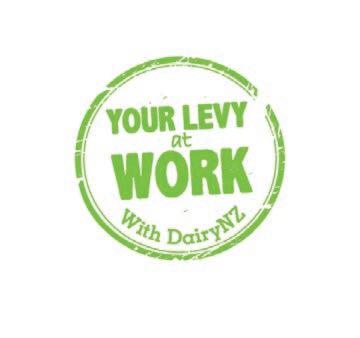
2 minute read
Industry good DairyNZ
from Dairy Farmer November 2020
by AgriHQ
Tips for reducing N losses on-farm
Virginia Serra Project leader
Anew project at DairyNZ called Step Change, aims to help dairy farmers achieve financial gains while making progress towards their environmental goals and adapting to pending regulation changes.
We’ve already worked with farmers in some regions to achieve these goals. Now, through Step Change, we are taking these lessons wider to farmers around the country, to help them adapt to current changes.
Since 2018, I have been leading a project working alongside a group of partner farms and their rural professionals in Selwyn and Hinds to identify ways to reduce their nitrogen losses.
The farms are part of a five-year DairyNZ project that’s influencing activity on hundreds of farms in the region sharing the changes taking place on partner farms with other local farmers through field days and discussion groups.
Under targets set by the Canterbury Regional Council, farmers in Selwyn need to reduce their nitrogen (N) losses by 30% by 2022, and in Hinds, staged targets require reductions of 15% by 2025 and 36% by 2035.
The most common actions farmers reported included improving their irrigation systems and management (94%), improving effluent systems (90%) and reducing N fertiliser use (80%). Several farmers who reduced fertiliser applications also said there was little impact on their pasture growth and profitability. Partner farmers from Selwyn and Hinds shared their tips on how to adapt to meet the new nitrogen fertiliser cap at a DairyNZ workshop recently.

Many changes made by these Canterbury farmers can be adapted to suit farmers in other regions and Step Change is working to share these lessons more widely.
Reducing N losses isn’t always easy, but this project shows it is possible and a number of options are available.
One of the main actions farmers in Selwyn and Hinds catchments used to reduce their N losses was reducing N fertiliser applications. Some top tips are: use if you need to make significant reductions to meet new regulations. 2. Reduce application rates to no more with DairyNZ

3.
4.
5. than 40kg N/ha in early spring and then to 0.8kg N/ha per day of round length. Optimise conditions for clover growth and get paddocks soil tested to help 1. Allow time to change N fertiliser
identify if a lack of nutrients is limiting pasture or clover growth (pH, P, K and Mo). To avoid the shading of clover, careful grazing management is also important. Skip a few paddocks when pasture growth rates are high and silage making is not wanted/needed. Have a monthly N fertiliser plan and monitor it, to check that you are on track to stay within your fertiliser budget throughout the year.
MORE:
For more top tips, visit dairynz.co.nz/ nitrogen-cap










